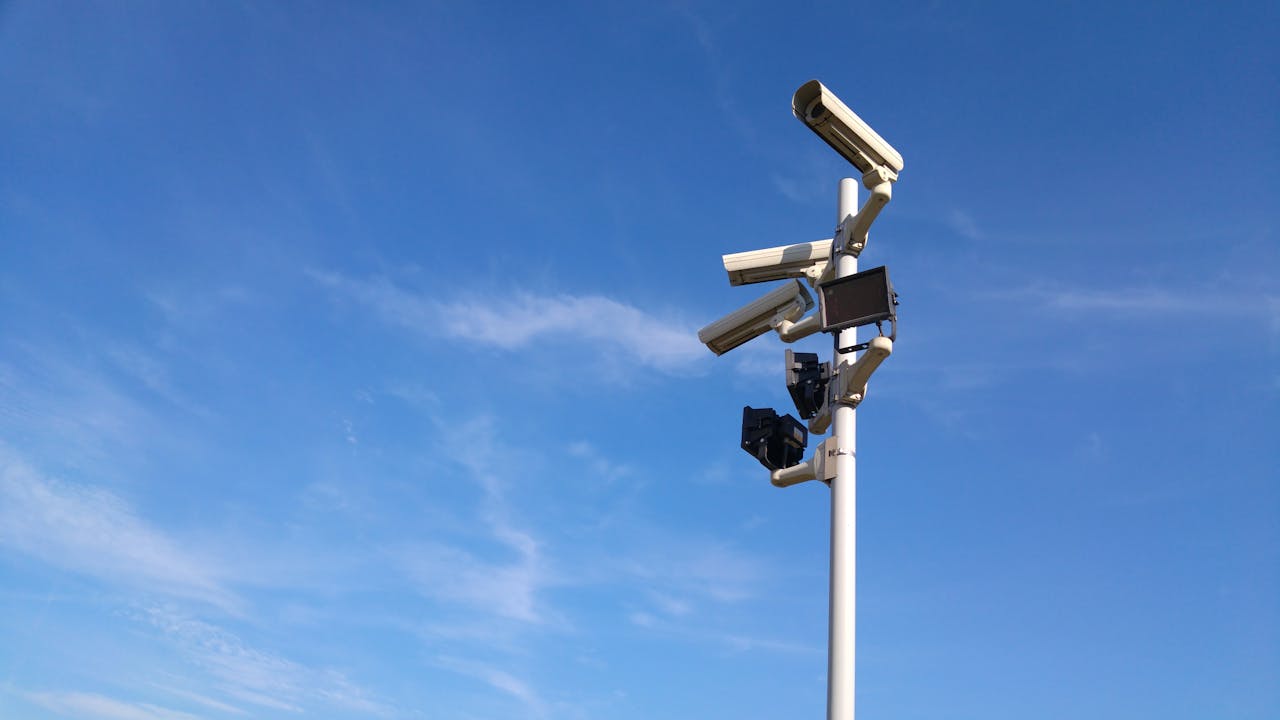Comments
- No comments found

No matter what Salesforce Cloud you utilize, you can't do without securing the platform.
There are various cyber threats you may encounter as well as reasons hackers attack systems.
Cyber attacks are constantly evolving, and the stakes are high: a single breach can compromise sensitive data, tarnish your company's reputation, and result in substantial financial loss. Did you know that according to the latest IBM Data Breach Report, 83% of companies reported experiencing at least one data breach? This statistic highlights the growing need for robust data security measures.
Why should you protect Salesforce if it's a powerful, trustworthy, and feature-rich CRM tool? Salesforce provides numerous security features to protect your company against malware attempts indeed, including:
Salesforce Shield (a suite of solutions: Event Monitoring, Platform Encryption, and Field Audit Trail);
Multi-factor authentication (MFA);
Organization-wide defaults;
Sharing rules.
However, you need to know how to leverage them properly, let alone comprehend when you need additional solutions. That's what we're going to discuss in this Salesforce security guide. Let's get started on making your Salesforce instance as protected as possible.

Do a security health check on Salesforce. Salesforce provides a dedicated tool for this task, Health Check. It's a free application built on Salesforce's core platform.
With this feature, admins can manage their organization's security settings, find and modify potential vulnerabilities in their Salesforce org, and define custom baseline standards according to their company needs. By comparing your current situation to best practices, you can establish a baseline (Salesforce Baseline Standard) or replace it with up to five custom baselines.
To perform a health check, access the tool mentioned above:
Navigate to Setup in your Salesforce org,
Find the Quick Find box;
Type “Health Check”;
Select it from the results.
Click the "Run Health Check" button and compare the results with the baselines. You'll receive a security score out of 100. An environment with a higher score is considered more secure. Review the list of settings evaluated, noting any that fall below the recommended level.
Below the score, you'll find a detailed report with your security settings, statuses, groups (password policies, session settings, user permissions, etc.), values, and actions. The settings will be marked as High-Risk, Medium-Risk, and Low-Risk.
Focus on the settings marked as high-risk. For example, if your password policy is too lenient, it could lead to unauthorized access. Medium and Low-Risk areas aren't as critical as high-risk settings but still need attention. Gradually work on improving these settings to bolster your overall security.
Review the provided recommendations, implement these suggestions, and inform your team about the changes. Make health checks a routine part of your security protocol and keep a record of the tweaks made based on Health Check recommendations. When Salesforce seems difficult to manage, purchase dedicated services (like these https://onilab.com/services/salesforce-development-services) to streamline your processes.
One of the most effective measures for fortifying your Salesforce environment is implementing multi-factor authentication (MFA). This involves adding an extra layer of security to user accounts. You may have seen this when logging into your Gmail, not only with your login and password but also by clicking the "Yes, it's me." button on your smartphone. A similar process may take place on your Salesforce platform.
It helps protect against a variety of prevalent threats, including:
Phishing attempts;
Credential stuffing;
Unauthorized account access.
Forrester Study on the Total Economic Impact™ of MFA for Salesforce Products states that companies that adopt MFA are 50% less likely to face a material breach. Salesforce has recognized the importance of MFA, making it mandatory for all accounts starting February 1, 2022.
Implementing MFA offers numerous benefits:
Making it much harder for attackers to gain access to your Salesforce account, even if they manage to obtain a user's password;
Protecting against common threats;
Compliance with industry standards;
Automating authorization/provisioning to manage users;
Increasing IT’s operational efficiency.
Depending on your Salesforce product, there are different steps to enable MFA:
Salesforce platform-based products, such as Sales Cloud and Service Cloud;
Cloud-based B2C Commerce;
Heroku Marketing Cloud Engagement utilizing Journeys, Messaging, and Email;
Datorama-powered Marketing Cloud Intelligence;
MuleSoft Anypoint Platform Marketing Cloud Social;
Quip goods;
Tableau Cloud.
To enable users of the external Experience Cloud site to use MFA:
Go to Setup, find the Quick Find box, and enter Users.
Choose Profiles and modify the profile(s) to which external Experience Cloud site users have been allocated.
Check Multi-Factor Authentication for User Interface Logins in the General User Permissions section.
Save.
While MFA is the obligatory option in Salesforce data access settings, implementing it can come with challenges. You can mitigate these with proper planning and support:
If some users find it cumbersome, explain the benefits of MFA and provide clear instructions.
If it's technically difficult, involve your IT team to support users. Provide troubleshooting guides and consider setting up a help desk.
If you’re using SSO, ensure that MFA is also enabled at the SSO level. This integration can streamline the login process while maintaining strong security controls.
If users don't have access to mobile devices for authentication apps, employ security keys or built-in authenticators as an alternative for these people.
Who can access what? Haven't user roles, as well as data access requirements, changed in your company? To ensure robust Salesforce security, you need to analyze and update user privileges to adhere to the Principle of Least Privilege. According to this principle, users should only have access to the data and features necessary for their job functions.
Identify the primary responsibilities and activities that users perform within your Salesforce organization. Establish the appropriate permission sets in accordance with these.
Remove any permissions that seem questionable. For example, a sales representative might need access to customer contact information but not financial records. However, you can utilize permission sets to return those permissions in case a user requests them. By doing so, you enable everyone to carry out their duties while maintaining data security.
Another tool Salesforce provides for managing user privileges is permission set groups to combine multiple permission sets. Consider the following Salesforce security features when setting permissions for employees:
Profiles. They reflect the job roles and control access to various Salesforce objects and data.
Field-level security. This capability allows you to control user access to individual fields within a Salesforce object, so you can make a field on the record Hidden, Read Only, or Visible.
Manual Sharing. Manual Sharing Rules (or User Managed Sharing) in Salesforce are applicable when the Record Owner wants to share the record with other users by clicking the "Share" button on the record itself. This feature helps grant temporary access to specific data. Users positioned higher in the Role Hierarchy typically can manually distribute the record in addition to the Record Owner.
Sharing rules. With this group of rules, developers can designate roles, regions, groups, and the degree of access each has to the data kept on the platform. They open access to CRM records that are restricted to others according to the default configuration.
Organization-wide Defaults. These permissions specify the degree of visibility that an object has in your Salesforce instance. They are meant to limit the Profiles—not grant users additional access—and determine what they are and are not allowed to do with respect to objects.
How can you leverage them all? Let's assume you've noticed several people had more access than necessary, potentially exposing valuable data. Here is what you should do:
Conduct a thorough audit and revise user roles.
Implement permission sets to grant additional access to users who require it temporarily without altering their primary profiles.
Protect sensitive fields with field-level security.
Establish sharing settings (rules) to automate data sharing based on specific criteria, reducing the need for manual intervention.
Set up regular audits.
Another effective strategy among Salesforce security best practices is to use IP restrictions and session settings. This entails restricting access to known IP addresses. So, the system will be available only to authorized users from specific trusted IPs. If someone tries to log in from an untrusted IP, they will either be blocked or prompted to verify their identity.
Depending on your Salesforce version, there are different ways to limit valid IP ranges on a profile:
Profiles: an Unlimited, Enterprise, Performance, or Developer Edition + a Professional Edition with the "Edit Profiles & Page Layouts" org preference enabled;
Session Settings page: a Group or Personal Edition + a Professional Edition without the "Edit Profiles & Page Layouts" org preference enabled.
Here's how to do it in profiles:
Go to Setup in Salesforce, enter "Profiles" in the Quick Find box, and select it.
If you're using the enhanced profile user interface, click "Login IP Ranges" > "Add IP Ranges."In the original profile user interface, locate the Login IP Ranges related list and select "New."
Specify IP addresses in the "IP Start Address" and "IP End Address" fields. Or, if you want to have only one IP address allowed, type the same address in both fields.
Optionally, enter a description or more details for the IP range.
Save the settings.
Plus, configure session settings, such as:
Session timeout (shorter timeouts for highly sensitive roles);
Session security levels;
Lockout policies after a defined number of failed login attempts to protect against brute force attacks;
High-assurance sessions for sensitive operations like managing certificates.
Salesforce comes with a lot of built-in security features, but Shield provides security controls with additional encryption, data and app monitoring, and security policy automation. It's equipped with the following features:
Shield platform encryption: Encrypts data at rest, including customer data and confidential business information.
Field Audit Trail: Tracks changes at the field level, providing a detailed history of data modifications.
Event Monitoring: Offers detailed insights into user activity and application performance, helping detect potential abuse and unauthorized access.
When combined, these tools offer a strong security system.
So, how should you protect Salesforce data? In this article, we've overviewed some Salesforce security best practices, from conducting a comprehensive health check of your current Salesforce instance to employing Salesforce Shield. Introduce MFA, optimize user privileges, and check what IPs can access your network.
Security is not a goal with a finish; it's an ongoing process. While your company grows and opens up more loopholes for data breaches due to a greater number of additional users and data sets, fraudsters' tricks to penetrate systems become more sophisticated.
Regularly update your security and sharing model to adapt to new threats. Implement security controls at every level, from transport layer security to object level security. Maintain a vigilant approach by continuously monitoring system performance and user activity.
Engage your Salesforce administrator and hiring managers to ensure that all security measures align with your organization's needs. Install the recommended security tools, focusing on data protection and customer privacy. And let your overall security withstand all the challenges of the modern digital world!
Leave your comments
Post comment as a guest